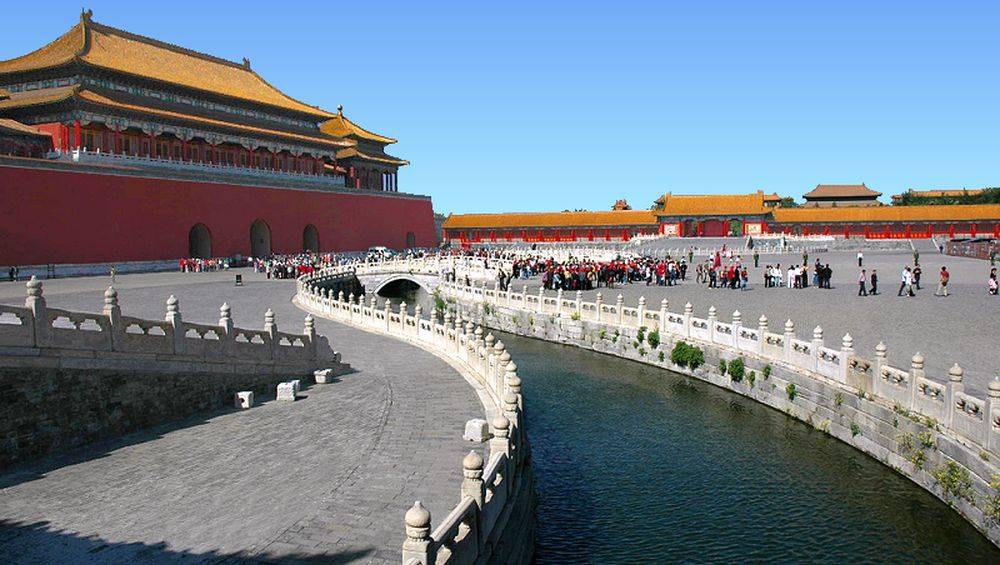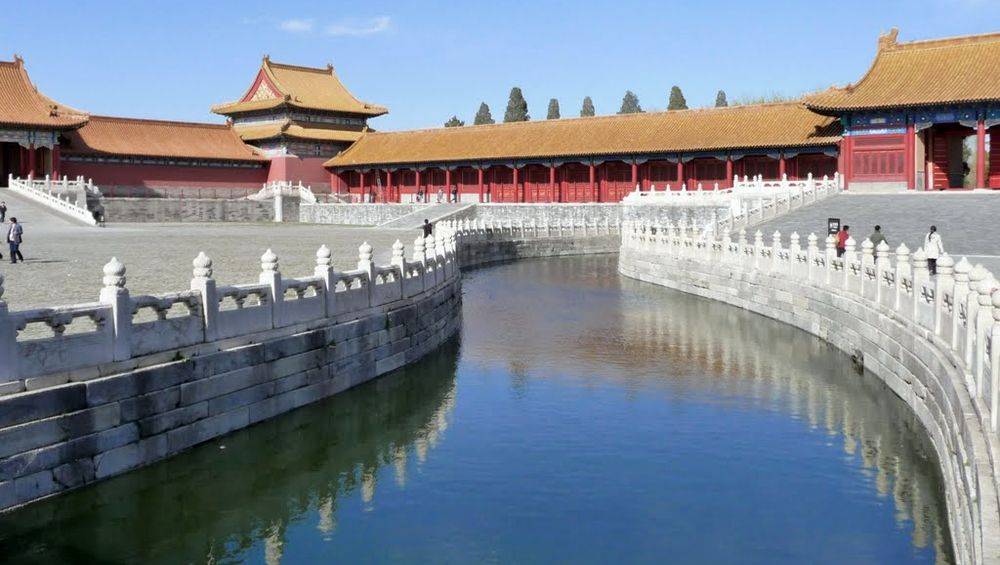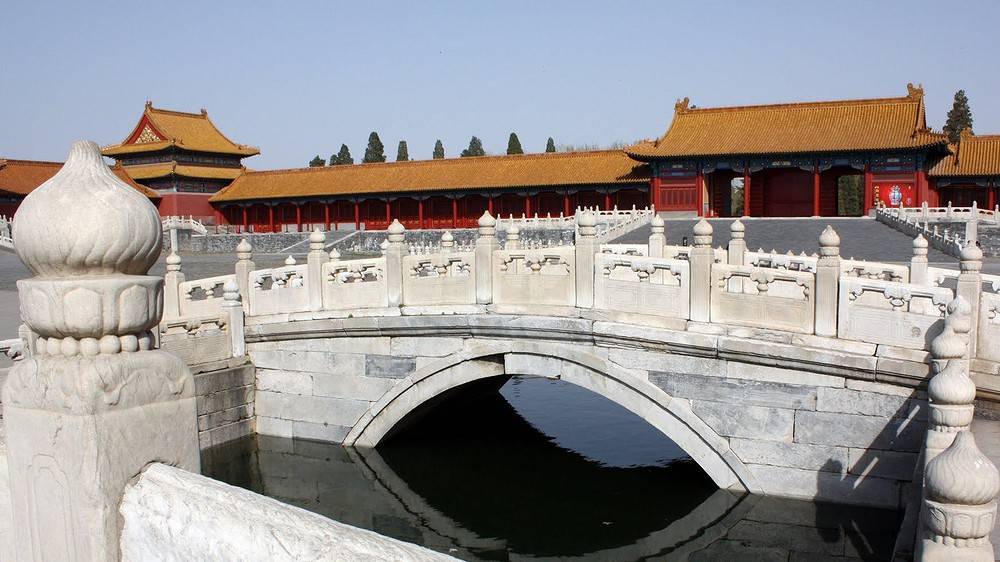The courtyard of the river of golden waters (Nei Jinshui qiao)
At the back of the south gate, this one just passed, the visitor is in a large courtyard surrounded by thick walls. It alone measures 10,000 square meters but is only one third of the next yard. North side is the gate of the supreme harmony, flanked by the small Zhendu and Zhaode gates, and on the west and east side there are also two other gates that lead to the sides of this courtyard, respectively the Xihe and Xiehe gates.
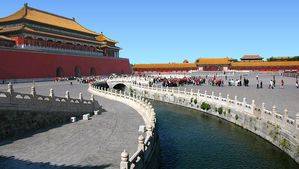
Bridge over the river with golden waters
The courtyard is crossed by an artificial river named the river with golden waters. Remember that yellow is the color of the Chinese emperor, so gold is everywhere in the forbidden city. Even if this river has gold only the name.
It follows a bed recalling the shape of a perfectly symmetrical Mongolian bow. It is approximately 5 meters wide and is shallow. The waters are rather stagnant because they come from moats. Initially free to circulate, the waters of this river were channeled by Emperor Zhengtong (1436-1449) when he imposed the creation of control valves of water flow in the ditches and in this river. Thus the river could serve as a reservoir in case of fire, which occurred relatively frequently, the whole palace being wooden. He took the opportunity to do other work: The bridges that cross the river of golden waters were rebuilt in stone to replace the original wooden bridges.
With regard to these bridges one must know that there were five of them, a figure that often comes down in Chinese art, religion and traditions. One is central, two framing, and two others are theirs, a little further. Like the passages in the Porte du Midi, the central bridge was reserved for the emperor, while the secondary bridges were used by members of the royal family. The other two bridges were for use by justice officials. These bridges are richly decorated, their balustrades are marble carved dragon and phoenix. These balustrades are not only on the bridges, they continue along the bed of the river. If the number 5 comes back so often, it is also because, according to the Confucian teachings, there are 5 virtues: Humanity, the sense of duty, the wisdom, the safety and and the observance of the ceremonial. Each of the bridges represents one of these virtues.
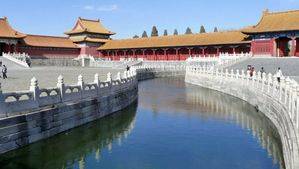
The river with golden waters
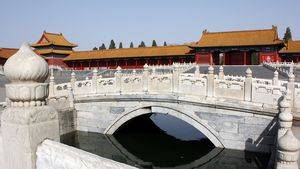
Bridge over the river with golden waters
See too:
Back to the list of the pavilions of the forbidden city






